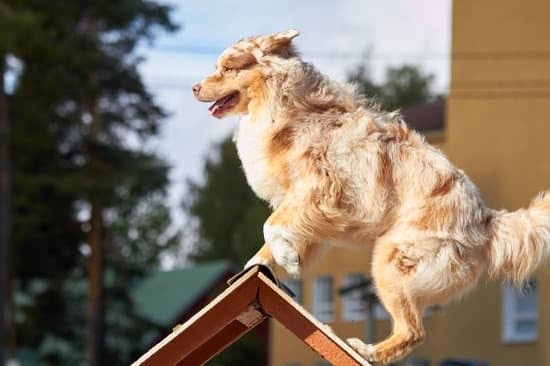Introduction
Dog Training 101 is an invaluable resource for anyone looking to train their canine companion. The topics covered in this class range from basic commands, such as sit and stay, to behavioral problems like excessive barking or destructive behavior. Taking part in Dog Training 101 can have multiple benefits; not only will your pup learn important skills, but they also get to experience new environments, create stronger bonds with their owners and become better socialized. Additionally, the owners of the dogs taking part in the class will get the chance to interact with other dog owners and gain valuable insight about dog behavior. All this combined makes for a more balanced and well-rounded pet.
Establishing Consistency and Boundaries with Your Dog
Maintaining consistency in your dog training approach is essential for teaching our dogs good behavior and proper obedience. You must be consistent regarding everything from expectations and commands to rewards and punishments. Dogs respond best when their owners provide predictable instructions. When you establish boundaries with your furry friends, you are informing them of acceptable behaviors by letting them know what’s allowed and not allowed. This helps create reliable expectations for co-existing together.
When creating a new boundary, it is important to carry out all commands with clarity, firmness, and consistency each time the desired behavior is wanted or undesired behavior arises. Additionally, providing positive reinforcement through treats can help strengthen the bond between you and your dog while also encouraging desirable outcomes from unwanted actions. Setting clear boundaries that are enforced consistently will help keep everyone in the household safe while ensuring that misunderstandings related to training are greatly minimized. Furthermore, providing consistent rewards like verbal praise, belly rubs and toys allow dogs to form a positional understanding of what acceptable behaviors mean to you as their owner in certain settings, resulting in a well-behaved pup at home or out on walks carrying basic obedience commands such as stay calm, sit or stop barking. Lastly, regularly scheduled playtime with your canine companion reinforces positive behaviors while engaging their intellect preventing boredom that can result in undesirable outcomes such as chewing on furniture or good shoes!
Creating a Positive and Stimulating Learning Environment for Your Dog
Dog training is a fundamental part of owning a pet. It allows you to bond with your pup, create a secure and trusting relationship and develop clear communication skills. It is vital that you create an environment in which the dog feels safe and encouraged to learn new behaviours. One of the best ways to achieve this is positive reinforcement. Rewarding correct responses with treats and praise endorses the desired behaviour, setting your pup up for future success. Interaction should also be regularly varied to ensure learning is fun for both of you; activities such as scent work, tug of war or even treasure hunts are good ways to keep it fresh and enjoyable. Providing physical exercise prior to or during training will help your pup stay active, alert and attentive – all necessary ingredients for successful learning! You will also need to think about appropriate distractions within the environment; make sure other household pets, toys or furniture are out of sight so that your pup can focus on their training sessions without becoming too easily sidetracked. With consistent application, these elements will assist in creating an enriching learning experience for both yourself and your dog!
Teaching Basic Commands Using Your Voice and Hand Signals
One of the most effective ways to train a dog is to use both your voice and hand signals. Using verbal commands and associated hand movements gets the dog’s attention, assists with faster comprehension, and helps to create a stronger bond between you and your pet. Here are some tips on how to teach basic commands using voice and hand signals:
1. Be consistent in your commands every time you ask your dog to do something. Use the same words, such as “sit” or “come”, each time and emphasize them by speaking firmly with a clear tone of voice. It’s also important to stay near the dog as you give these commands as it will help them to understand more quickly.
2. Use an accompanying gesture whenever possible when giving verbal commands so that you are providing a cue for the desired behavior in both sound and action. For example, if you’re teaching your dog to sit, pair it with an open-hand gesture extended downwards while saying “sit”. This will help ensure they learn quicker due to seeing what comes afterward when they perform said command successfully each time.
3. Show enthusiasm when they respond correctly so they know they are being praised for their obedience. Physical contact such as patting or rubbing reassures them that you’re pleased with their response as well as encourage them continue this behavior in the future. Meanwhile calling their name along with positive reinforcement words such as “good boy/girl!” helps build their confidence in knowing that this kind enthusiasm from their owner is what’s expected from them during training sessions going forward too.
4. Once your pup has successfully followed one command, immediately add another until eventually he/she can reliably repeat all desired behaviors without prompting on cue given both verbally and through body language – only after mastering this should one move onto more challenging exercises such as new commands or even agility drills down the line (if applicable).
By using consistent vocal cues along with visual cues like hand motions, not only will your pup be fully trained in no time but the better understanding of communication between you two gives way to a much stronger bond between trainer and pet!
Understanding How to Use Rewards and Corrections Effectively
Dog training is a great way to ensure your pup will be obedient and have the best behavior possible. It involves using rewards when you pet recognizes good behavior, and corrective measures to discourage bad behavior. Rewards can come in the form of verbal praise, treats, toys and belly rubs. Corrections can involve stern verbal corrections or time out (for puppies).
For effective dog training to take place, it is important for owners to understand how to use the “positive reinforcement” method effectively. This technique involves reinforcing desired behaviors by rewarding your pet with something they will enjoy such as food treats or verbal praise. It is also important that corrections are given in a consistent and timely manner so that your pup understands what they did wrong. Furthermore, corrective measures should always correspond with undesired behaviors so they know what is expected of them and can quickly make changes in their behaviors accordingly. It’s also essential that corrections are not too severe—they should simply be an inconvenience to remind them not to do it again. An example would be saying “no” in a firm voice if your pup barks repeatedly at strangers instead of much harsher punishment like hitting or yelling.
Additionally, for successful dog training it is important for owner to learn how to properly read canine body language and cues which include being mindful of ears pinned back against its head, tail between its legs and certain vocalizations like low growls/barks can be warning signs that a correction may be needed. With practice and consistency owners should soon have mastered their pup’s body language which will facilitate better communication overall between pet and owner. In conclusion, having a well-behaved pooch requires patience, consistency and understanding about when rewards or corrections are required; once this balance has been achieved both dog and owner will happily live together in peace!
Looking at Advanced Tricks and Exercises to Challenge Your Dog
Once you have mastered the basics of dog training, it can be quite rewarding to advance to more difficult tricks. To challenge your pup and keep him entertained, try the following exercises.
For starters, trying teaching your pup to jump over barriers. Obstacle courses are a fun way to engage your pup’s body and mind. You can start with a low hurdle or hoop and gradually increase the height as your dog masters it. You can add challenges as you go such as weave poles or even a mini ‘A-frame’ for climbing. Utilizing commands like ‘over’ or ‘jump’ make the exercise even more engaging – and encourage agility of both body and mind!
Adding a series of commands together will help challenge your canine friend. For instance, try having him sit-stay while you move five feet away then come back where he is staying and give him his favorite treat – this demonstrates self-control in its most basic form. Plus, you can spruce up this drill with other elements such as incorporating multiple people or at various increased distances. The key is to reward his success along the way!
Increasing complex behaviors, like rolling over will also keep up sharpness while providing lots of enjoyable playtime with your pooch. Remember that using treats helps reinforce these difficult maneuvers; after he completes it once praise him, let him practice regularly and soon these complex positions will become second nature for your pet!
Recognizing How Your Dog Responds to Training
Understanding how your dog responds to training is an essential element of Dog Training 101. Each dog may have its own unique way of responding to commands and rewards, so knowing the differences can help you evaluate which methods work best for your pup.
The most common type of response by a dog is positive reinforcement. Positive reinforcement involves giving the dog a reward when they behave in the desired way that they have been trained to do. This could be giving them treats or a pat on the head when they show obedience. In this type of response, it’s important to give the appropriate incentive as soon as possible after the desired behavior has occurred, as this will increase their chances of doing it again in future training sessions. Additionally, try not change up incentives too often as dogs can become unclear about what behavior should be rewarded and which should not once an alternate has been introduced.
Another popular method is negative reinforcement. This type differs from positive reinforcement in that it encourages behavior by providing consequences for an undesirable action – discouraging bad behaviors by removing treats or eliminating playtime until improved results are achieved. It’s important to remember that any corrections should be clear and consistent; confusion will only lead to further behavioral issues down the line.
Finally, there is also operant conditioning, which teaches dogs how to accurately recognize words associated with certain behaviors simply from repeated verbal cues alone without requiring food or other incentives as a reward or punishment. Mastering this level of communication requires patience and commitment but often leads to increased intelligence in dogs and improved companionship between owners and their furry friends!
Creating and Maintaining a Dog Training Routine
Creating and maintaining a dog training routine is key to successful and lasting behavior change. Dogs respond best to consistency, so being disciplined when it comes to your dog’s training sessions is essential. Build daily or weekly exercises into your home life that involve consistency and structure, such as regular meal times, walking times, and playtimes. During these each time set aside a few minutes for basic obedience commands like sit, stay, come, heel, and leave it. Repetition is key; keep the commands short and sweet for the most successful results! Make sure to reward your pup with treats or praise when he performs well. Additionally, breaking up long training sessions into multiple, shorter ones can be helpful for both you and your pup. That way you won’t get too frustrated if problems arise during one session; instead, you can calmly finish up the session then pick up again later when you’re both more focused. Above all else, remember that keeping a consistent routine with lots of positive reinforcement will help your pup pick up on obedience faster than any other method—so stick with it!
Spotting and Solving Common Training Problems
Dog Training 101 is essential for every pet owner. Doing so can help them form a bond and connection with their pet that will last a lifetime. There are several common dog training problems that may present themselves during the process, such as barking too much, eating things they shouldn’t eat, not listening to commands, etc.
When tackling these training problems, owners must remain patient and consistent. It usually takes some trial and error before the desired changes are seen in a dog’s behavior. Owners should practice positive reinforcement by rewarding their pup when they do something right. This should be done every time until the behavior becomes second nature to the dog. Negative reinforcement should be avoided whenever possible as this can encourage aggression rather than proper behavior.
Another way to tackle poor behaviors is to understand the motivation behind it. For example, if the dog barks too much, the owner should try to identify why it does so—perhaps there’s an animal or person approaching beyond its field of vision? Addressing underlying causes or triggers of negative behaviors can make training much easier in the long-term. Additionally, dogs respond well to consistent routine and structure; providing these components of daily life from an early age will also make training easier. Finally, owners should ensure their pup gets plenty of exercise each day; dogs need physical activity for mental stimulation and improved overall health which will benefit both you and your pet in the long run!
Wrapping Up
Dog Training 101 is an incredibly rewarding experience for both pet owners and their furry friends. Not only does training sharpen a dog’s mental acuity, it creates a better relationship between the two. Professional trainers understand how difficult the process can be, but they know how important it is to set boundaries, teach tricks, and build good habits with consistency.
When done properly, dogs that go through training have been known to lose behavioral issues such as being destructive or aggressive. Not to mention, teaching commands also increases their ability to understand what their humans are communicating to them. They’ll understand phrases like “sit” or “stay” at first command and won’t even need any treats to participate in activities together with you!
Training will also allow pets and owners to build stronger bonds with each other. This can be accomplished through increased attention and communication from each party. Building trust takes time, but is something trainers will guide you through during the process of training your pup! Plus, if you own multiple dogs—training allows them all to form better relationships within your home since they’ll each understand proper house rules.
The most gratifying outcome of Dog Training 101 is seeing the joy on your dog’s face when they learn a new trick or command and seeing just how far your pup has come since day one. You’ll feel relief knowing that Fido now understands how he must behave after spending time learning boundaries with the help of a professional trainer while surrounded by positive energy in an encouraging environment. As you practice obedience commands daily and continue building behavioral habits over time – you’ll find more ways to connect with your pup beyond just playing toss out in the yard!

Welcome to the blog! I am a professional dog trainer and have been working with dogs for many years. In this blog, I will be discussing various topics related to dog training, including tips, tricks, and advice. I hope you find this information helpful and informative. Thanks for reading!





